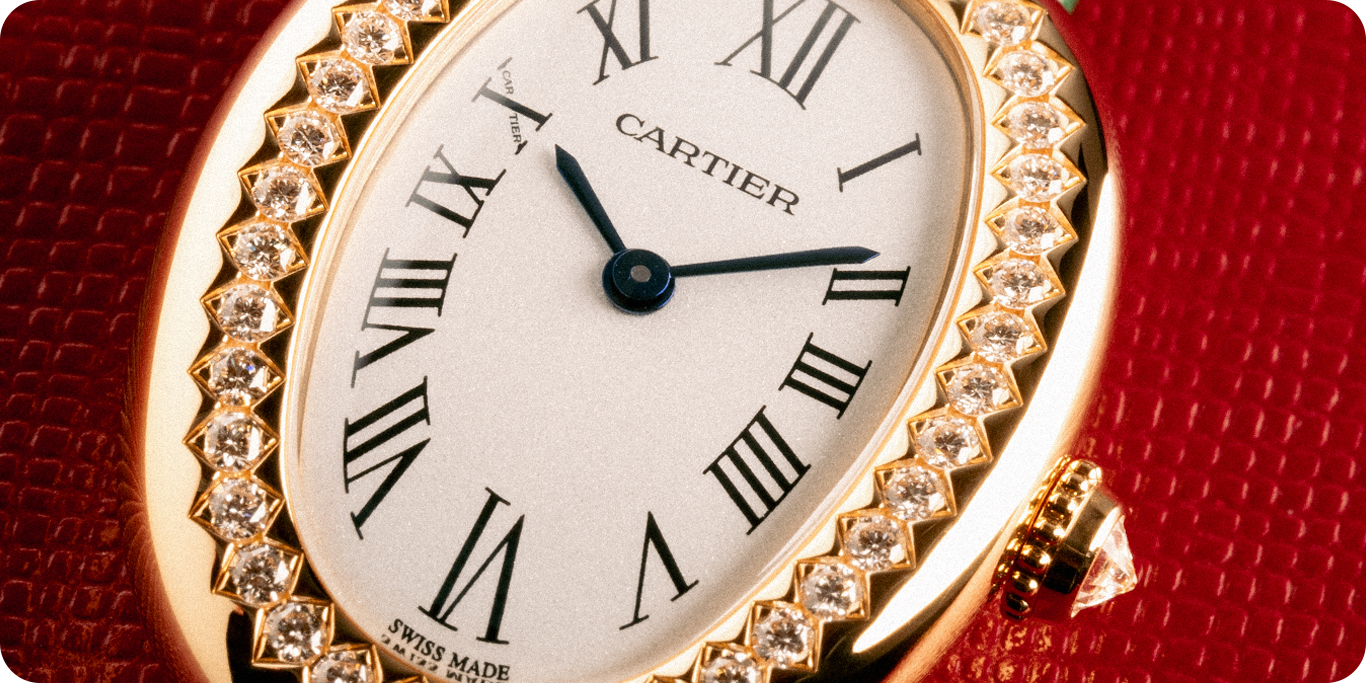
Gold endures as watchmaking’s most human material. Explore its history, meaning, and modern icons from Rolex, Cartier, and Omega.

Walk into any modern watch boutique and you’ll see titanium, ceramic, and carbon fiber gleaming under the lights. Each represents progress in its own way, chasing lighter weights and harder surfaces. Yet among these modern materials, gold still carries a different kind of gravity. It feels warm where the others feel cold. As its price reaches record highs, collectors are once again asking what keeps this ancient metal relevant in a world that constantly moves forward.
Long before gold came to symbolize wealth and success, it earned its place in watchmaking for practical reasons. The metal does not corrode, tarnish, or magnetize easily, which made it ideal for the marine chronometers and precision instruments that guided navigation. Function came first, symbolism followed. Over time, watchmakers learned to shape it into forms that balanced strength with beauty. Depending on the alloy—copper for rose, palladium or nickel for white, silver for yellow—its tone and hardness shift subtly, each variation with its own character.
Pick up a gold watch, whether a mid-century Patek Philippe or a modern solid-link Rolex, and that history is easy to feel. The weight steadies the hand, and the glow softens the line between machine and ornament. What begins as metallurgy ends as emotion.

For as long as people have cared about luxury, gold has been the measure of it. Its presence marked significance long before watches existed. When watchmaking began to mature, gold naturally became its language of refinement. Early Patek Philippe pocket and wristwatches, including the reference 96 Calatrava from 1932, gave that language structure. By the mid-20th century, Rolex translated it into something universal with the Day-Date, known simply as the President. Wearing one came to mean permanence rather than display.
Gold’s softness demands precision from the people who work it. Every bevel, lug, and fluted edge has to be finished with restraint so the case keeps its geometry. You can read a watchmaker’s patience in the surface itself; each line is evidence of time and control. The result is quiet perfection that only seems simple from a distance.
That same discipline appears in modern pieces such as the Rolex Day-Date 36 Ref. 128345RBR-0068. The dial’s shimmer, formed from synthetic glass flecked with copper, catches light in unpredictable ways. It’s an old idea made new again, proof that refinement can evolve without ever needing reinvention.

Lightweight materials may grab attention, but gold still sets the tone for what real luxury feels like. Its return to the spotlight has less to do with prices and more to do with how it makes people feel when they wear it. The metal’s value rises and falls like anything traded, but its meaning stays put. Collectors look at a gold watch and see something built to last—a design that holds memory, not just shine.
The experience of wearing one explains why. Gold warms quickly against the skin and settles on the wrist with a density that steel can’t match. The sound of the clasp closing carries a low, rounded tone that feels final. Over years of wear, the surface changes slowly, gathering a soft glow instead of losing it. That tactile life is what makes the material irresistible to collectors.
Cartier has always understood this relationship between form and feeling. From the Tank Louis Cartier to the Crash, the brand treats gold as sculpture. The Baignoire de Cartier in yellow gold, with its oval case and diamond-set bezel, continues that tradition. The same watch in steel might look elegant, but in gold it radiates warmth that feels almost alive.
These qualities make the metal less about status and more about connection. Light sliding across a polished dial, the gradual mellowing of tone with age—none of it can be manufactured. Each mark becomes part of the watch’s story, proof that progress in design doesn’t always mean leaving the past behind.

Gold’s place in modern watchmaking isn’t about nostalgia. It comes down to continuity. In a business that never stops redesigning itself, gold is the rare thing that doesn’t need to change to matter.
The Omega Speedmaster Moonwatch in Sedna Gold captures that balance. Omega mixes gold with copper and a touch of palladium, creating an alloy that keeps its tone steady long after most metals start to fade. The material gives the familiar Speedmaster a quiet warmth that softens its technical edge. It shows that performance and elegance can exist comfortably side by side.
Gold persists because it still does what it always did. It grounds design, holds its shape, and links one generation of collectors to the next. Its permanence also feels right for the present moment. The world keeps getting faster, lighter, and more digital, which might be why things with real weight suddenly feel comforting again. Gold carries that feeling better than anything else. Its appeal isn’t about scarcity so much as contact—the way it warms, the time it takes to make, the craft that never rushes.
Bezel is the top-rated marketplace for buying and selling luxury watches. We give you access to tens of thousands of the most collectible watches from the world's top professional sellers and private collectors. Every watch sold goes through our industry-leading in-house authentication process, so you can buy, sell, and bid with confidence.
Download the Bezel app on the iOS App Store or start searching for your next watch today at getbezel.com.
Bezel is available to download on the App Store now. Please reach out to our concierge team if there is anything we can help you with!